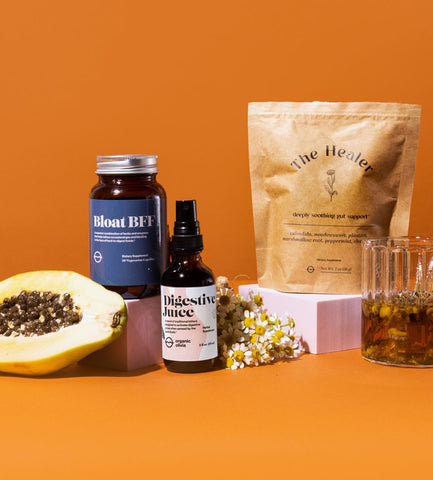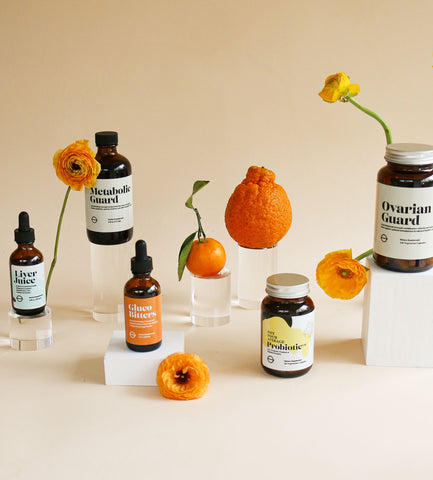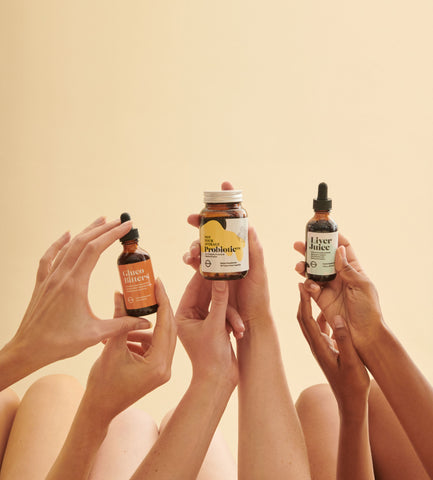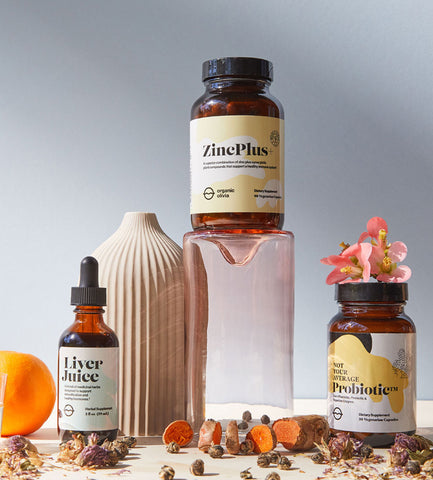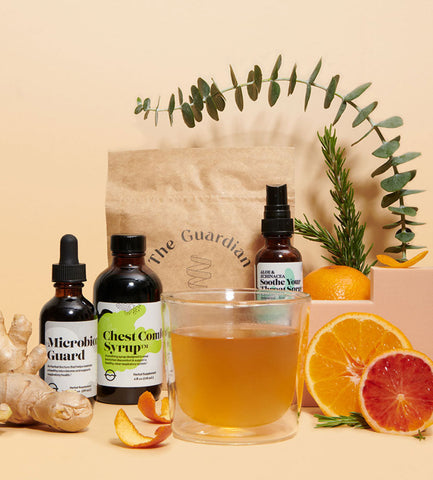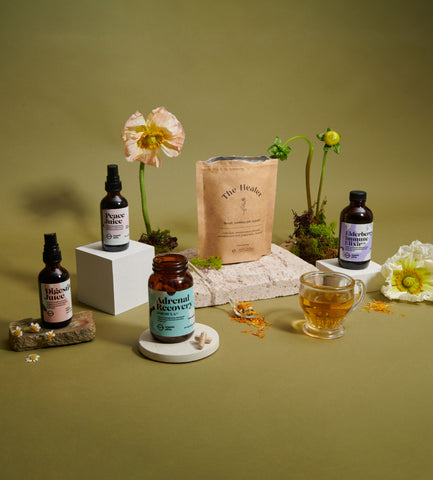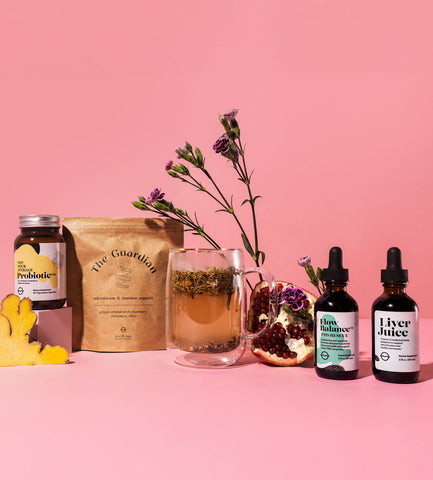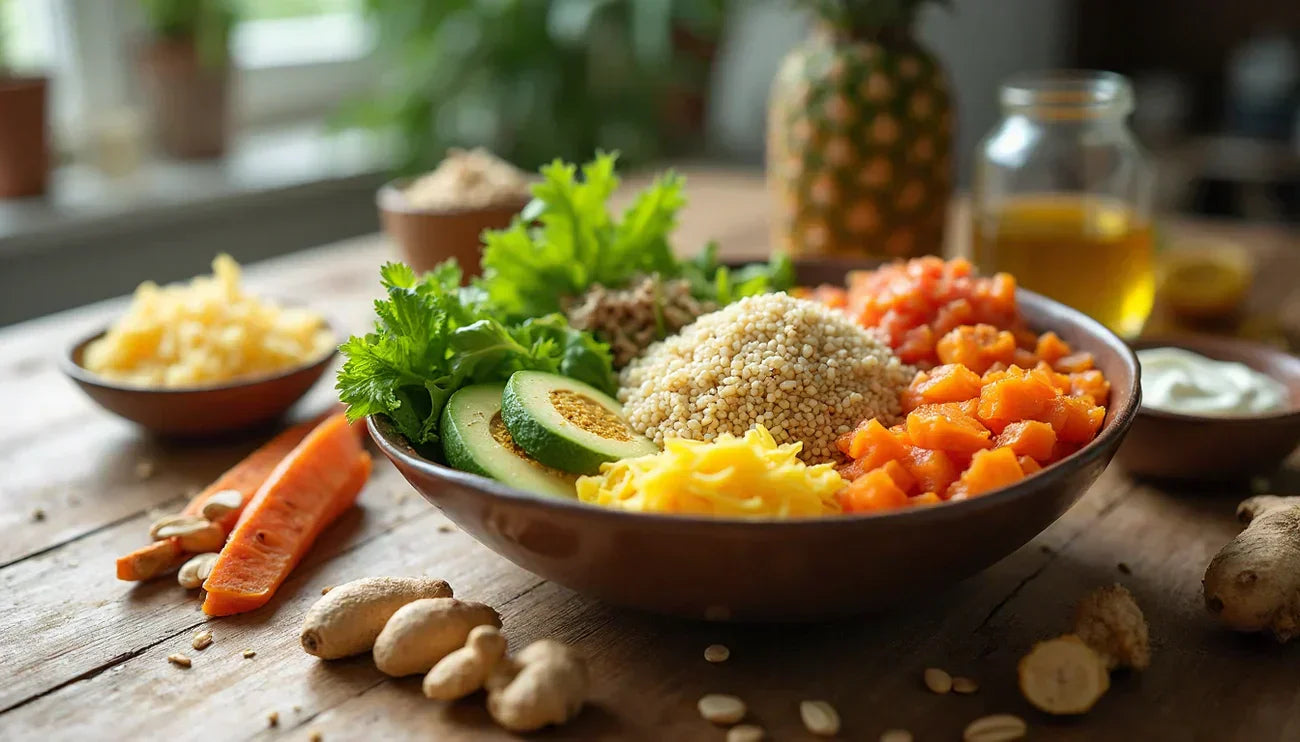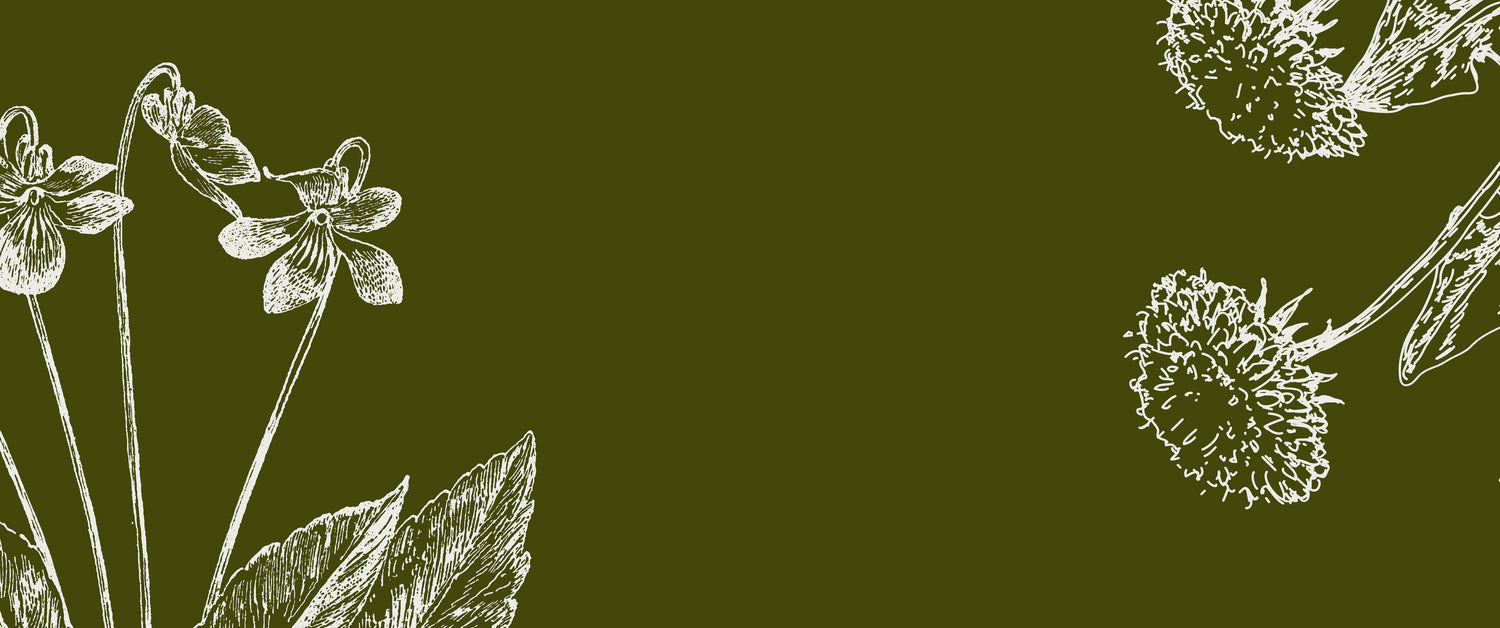It’s no surprise that the wellness corner of the internet loves to talk about leaky gut. Some folks swear it’s the root of every modern health woe, while others dismiss it as pseudoscience. But here’s the truth: the phrase “leaky gut” may sound buzzy, but the science behind it is very real. In the biomedical research world, this phenomenon is referred to as increased intestinal permeability, and it’s been studied for several decades. So, what’s actually going on when your gut is “leaky”? Let’s break down what this entails, how it happens, why it matters, and (most importantly) how to support repair. We’ll cover diet, lifestyle, and targeted supplementation, including the herbal formulas in our Gut Building Protocol – designed to help nourish and restore your gut lining from multiple angles.
Support your gut health with foundational formulas that soothe, strengthen and balance your digestive system. 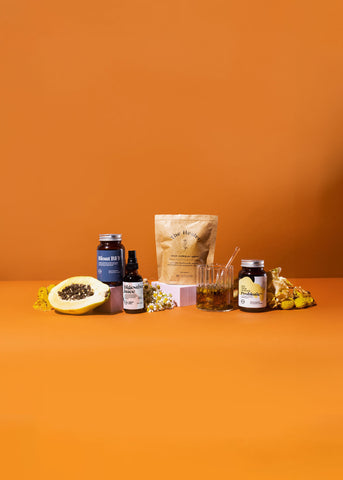
Gut Building Kit
What “Leaky Gut” Really Means
Your gastrointestinal (GI) tract isn’t just a passive food tube. It’s a living, breathing, complex barrier comprised of several layers of defense. Epithelial cells (or enterocytes) line your intestines, forming a tightly packed wall that is sealed together with protein gatekeepers called tight junctions. Their responsibility is to allow nutrients and water into your bloodstream while keeping pathogens, toxins, and other particles that don’t belong out. The mucus layer adds a protective buffer that traps invaders while immune cells patrol the area, scanning for intruders.
Now, when the tight junctions between enterocytes become lax or dysfunctional, larger molecules (like undigested food particles, microbial toxins like lipopolysaccharide or LPS, and other inflammatory compounds) can sneak into your bloodstream. Your immune system flags them as threats and springs into action, triggering an immune reaction. Over time, this inflammation can spread far beyond your gut.
Why the Gut Gets Leaky
It’s very rarely just one thing. Usually, it’s a perfect storm of gut stressors, including:
-
Chronic stress: stress hormones (like cortisol) can thin out your gut lining and shift the gut microbiome in the wrong direction.
-
Inflammatory foods: processed snacks, refined sugar, alcohol, and certain personal triggers or intolerances can keep the gut wall in a constant state of irritation.
-
Dysbiosis: overgrowth of harmful bacteria, parasites, or lingering viruses (including chronic infections) can produce toxins (like LPS) that weaken tight junctions.
-
Certain medications: NSAIDs, some antibiotics, and proton pump inhibitors (PPIs) can compromise the gut barrier.
-
Nutrient gaps: low zinc, vitamin D, or amino acids (like glutamine) can slow your gut’s ability to repair itself.
Signs You Might Have Increased Intestinal Permeability
Leaky gut doesn’t show up the same way for everyone, but some patterns are common:
-
Bloating or discomfort after meals
-
Food sensitivities that seem to multiply
-
Fatigue or brain fog
-
Joint pain or unexplained inflammation
-
Skin flare-ups (eczema, acne, psoriasis)
-
Weakened immune system and/or autoimmunity
Also, studies have connected intestinal permeability to conditions like IBD, celiac disease, type 1 diabetes, PCOS, and chronic fatigue syndrome. Although it’s not yet understood if it’s a cause, a consequence, or a contributing factor to these conditions, the link is undeniable.
How to Support and Seal Your Gut Lining
While it can seem like leaky gut is somewhat inevitable these days, your gut lining is constantly regenerating itself. In other words, with the right support, you can help it repair and strengthen over time.
-
Remove irritants – Try to cut down on processed foods, excess sugar, alcohol, and anything that you know sets off your system.
-
Soothe inflammation – Incorporate demulcent herbs like slippery elm, marshmallow root, and licorice root to coat and protect your gut lining. Pair them with anti-inflammatory compounds, such as curcumin in turmeric, omega-3 fatty acids in fish, and polyphenols in berries to help calm immune overreactivity and reduce inflamed intestinal tissue.
Herb spotlight: marshmallow root. Althaea officinalis is rich in mucilage, a gooey, gel-like compound that physically coats your gut lining and creates a barrier between your cells and food waste traveling through your intestines. It’s specifically studied for its ability to soothe mucous membranes and calm irritated tissues.
Pro tip: make a marshmallow root cold infusion by soaking dried marshmallow root in room-temperature water overnight, then straining it off in the morning. It’s earthy, slightly sweet, and super healing to your gut, especially if you drink it first thing in the morning on an empty stomach. If you don’t love the taste, try The Healer Tea, which contains marshmallow root along with other enjoyable herbs like peppermint, chamomile, and calendula.
-
Feed the good bugs – A diverse, fiber-rich diet encourages a thriving microbiome, which in turn keeps tight junctions working effectively. Think: legumes, leafy greens, root veggies, chia, flax, and fermented foods (if tolerated). Another low-lift way to ensure you have an optimal balance of good and bad bacteria in your gut is with a targeted probiotic. Ours is a 3-in-1, featuring fermented digestive enzymes, prebiotic fiber, and clinically studied probiotic strains to both introduce beneficial bacteria AND feed them! If you have a history of SIBO, try Bloat BFF instead for spore-forming, soil-based probiotic strains that are SIBO-friendly.
-
Nourish with key nutrients – Make sure that you’re getting enough zinc, glutamine, vitamin D, glutamine, and collagen as they’re all crucial building blocks for gut repair.
-
Manage stress – Your gut lining is stress sensitive! Mindfulness-based practices like yoga, breathwork, chanting, and meditation can keep your nervous system out of fight-or-flight and in a gut-healing state.



